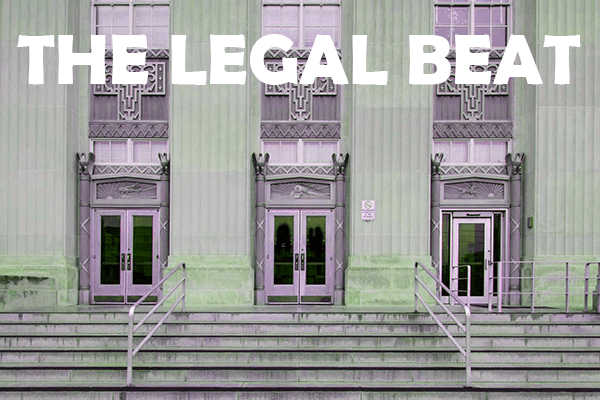|
RCBJ-Audible (Listen For Free)
|
New York’s Highest Court Says Vacancy Studies Need Not Be Perfect; Retroactive Refunds Permissible; Allows Forced Rent Reductions
ANALYSIS
New York’s Court of Appeals has ruled in the City of Kingston’s favor in a variety of challenges to its implementation of the Emergency Tenant Protection Act (ETPA) and provided clarity and guidance to other municipalities wrestling with low vacancy rates and rising rents in their villages and towns.
The ETPA allows any municipality to declare a rental “housing emergency” if it determines that a class of buildings with six or more units constructed before January 1, 1974 have a vacancy rate under 5 percent. With that finding, the municipality, with the NY Division of Housing and Community Renewal, can impose rent stabilization on the buildings in that class. Rent stabilization mandates limited rent increases and automatic renewals of leases, restricting the landlord’s ability to raise rents or decline renewals of existing tenants.
A challenge from the Hudson Valley Property Owners’ Association (HVPOA) and group of private landlords was rejected by the state’s highest court. The HVPOA and various other landlords have brought court challenges to communities including Nyack, Newburgh, Poughkeepsie and Kingston, seeking to annul their vacancy studies and prevent them from implementing rent stabilization in Hudson Valley communities.
The HVPOA opposes the ETPA asserting that it creates a disincentive for investment in housing, precludes updating of older buildings most in need of maintenance and repair, deprives landlords of a return on their investments, and unfairly requires a small class of landlords to solve the larger societal problem of an inadequate number of housing units.
In Kingston (as in other communities), the HVPOA challenged the methodology and results of the vacancy study based on its own studies. It also challenged tenants’ abilities to seek refunds retroactively to the ETPA’s implementation, and the City’s reduction of rents by 15% (claiming the ETPA rent adjustment did not allow reductions). Kingston has also had a “rent freeze” on covered buildings since 2023.
After losses at both the Supreme Court and the Appellate Division, the HVPOA was granted leave to appeal to the Court of Appeals.
At oral argument last month, the Court of Appeals seemed receptive to arguments that studies need not be perfect and that good faith efforts to measure vacancies could pass legal muster, even if flawed.
Legislation is also pending that would make vacancy studies optional and expand opportunities for municipalities to opt into the ETPA.
A finding for the landlord group at the high court would have created a pathway for landlords to challenge vacancy studies by conducting their own competing studies or finding flaws in municipal results.
But, in an order issued last week, the Court of Appeals sided with Kingston on all counts. It held that when a plaintiff challenges an emergency declaration made pursuant to the ETPA, “the key question is whether the vacancy rate finding rests on a reasonably reliable and relevant measure of the municipality’s actual vacancy rate for the relevant class of housing accommodations.”
It also held that the burden of demonstrating that a finding does not meet this standard rests on the plaintiff challenging the study.
Vacancy surveys need not be perfect and the mere fact that “the data underlying an emergency declaration could be more thorough or comprehensive should not suffice, standing alone, to invalidate a declaration. When challenged, a municipality should be able to explain why its survey was reasonably likely to yield reliable and relevant results and should not ignore obvious flaws in survey design that would distort the results.”
The implications statewide cannot be understated. Municipalities facing court challenges, other than in Kingston, have been stymied in their efforts to aid residents facing unregulated and increasing rents.
But beyond the challenge to vacancy surveys, the HVPOA also challenged Kingston’s fair market rent guideline, saying that it had an impermissibly retroactive effect, and that using rents dating back to January 1, 2019 as a reference date for calculating fair market rents was unlawful. The HVPOA argued that the fair market rent guideline impermissibly punishes property owners for past conduct.
The Court rejected that argument, noting that state law prevented any refunds from being issued more than two years from the acceptance of an emergency declaration. The Court said that when the law expanded the ETPA statewide, it did not “inoculate” property owners from retroactive refund claims. In other words, owners of buildings potentially subject to inclusion in the ETPA may face retroactive refund claims dating two years prior to declaration of a housing emergency in a municipality.
And, the court declined to rule on Kingston’s 15% rent reduction. The HVPOA had argued that rent reductions were not permissible under the ETPA, but the Court said that the issue was not properly preserved, leaving in place Kingston’s 15% rent reduction on ETPA covered units.
The implications of the ruling are staggering for local governments, tenants in covered buildings, and property owners.
For municipalities considering ETPA emergency declarations, the need for an error-free vacancy survey in obviated, and the burden on landlords challenging surveys has been clarified. For tenants, retroactive relief on impermissible rents and potential rent refunds are clearly legal.
But for landlords, the loss in court means the likelihood that a property owner having its residential property in an class subject to rent stabilization is greater. Rents collected may be retroactively recaptured. And, a determination of fair market rent that looks back in time may undermine the returns of investments, and jeopardize financing and refinancing options on existing buildings. How lenders and investors will value residential properties of more than six units constructed before 1974 remains to be seen.
The federal lawsuit filed against Nyack and Newburgh last year was dismissed by the court, rejecting the HVPOA’s arguments that the law was facially unconstitutional.
In New Paltz, the municipal government rejected an emergency declaration despite its vacancy survey yielding less that 5%.
And, Kingston is currently considering another year of a “rent freeze” on covered units, over landlord objections of rising costs and decreasing revenue.













